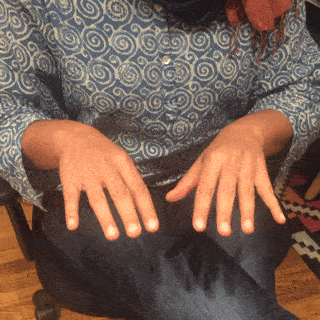The Finger Waggle
RC faculty waggle our fingers to show agreement in meetings, and occasionally in one-on-one discussions. This was introduced by Mary Rose Cook who originally encountered it in an activist community in Leeds, England. We’ve been using the Finger Waggle for a couple of years and the results have been both positive and surprising.

The Finger Waggle solves the problem of people repeating each other in meetings. This can be merely annoying, but it can also have more serious consequences: it can keep the meeting from moving forward even though everyone agrees; it can focus attention on unimportant issues (see bikeshedding); and it can minimize contributions, when others appear to pass off someone’s original work as their own.
People repeat each other for many reasons: because they agree, because they see the same idea differently, to hear their own voice, or just because they’re not thinking about it. I’m as guilty of this as anyone. In the moment, it’s hard to remember that you’re in a meeting to solve a problem as a group, not to make yourself heard.
One interesting aspect of the Finger Waggle is that it solves this problem in a systematic way. Instead of relying on everyone to think constantly about whether they’re repeating each other, it gives them something else that’s natural and easy to do in the moment.
In addition to solving the problem of people repeating each other, there are a few other nice things about the Finger Waggle. Conversations generally move faster because waggling your fingers doesn’t take long. Multiple people can show their agreement at once, increasing the bandwidth of the meeting. Personally, waggling my fingers forces me to take a step back and remember why I’m in a meeting in the first place: not to be right, or to be heard, but to do my part to solve a problem.
